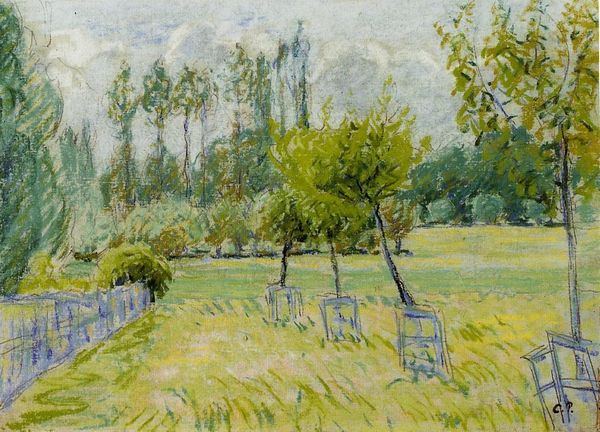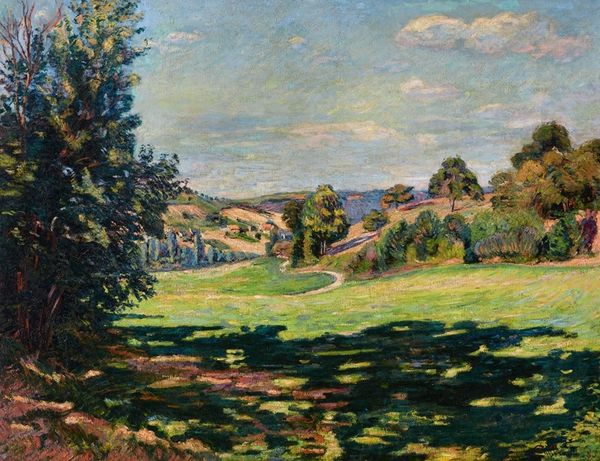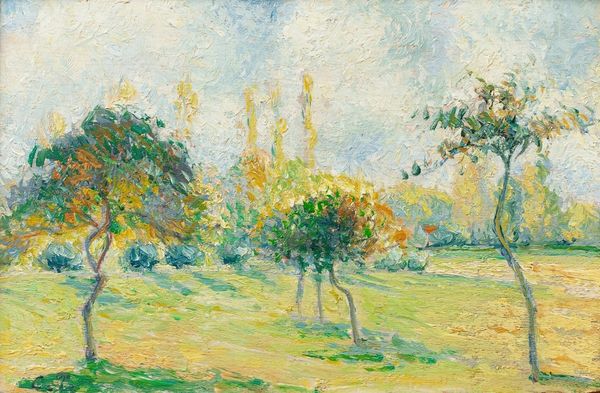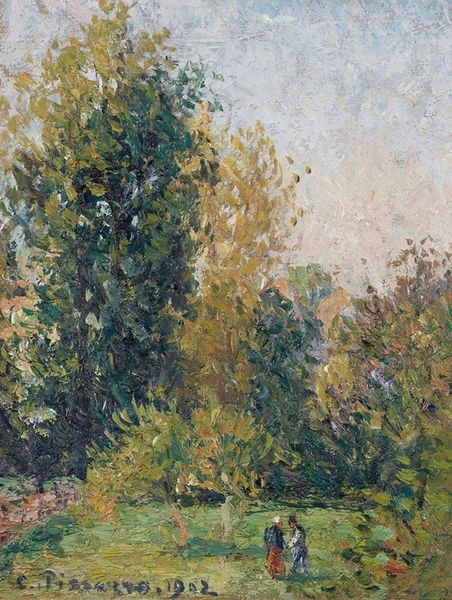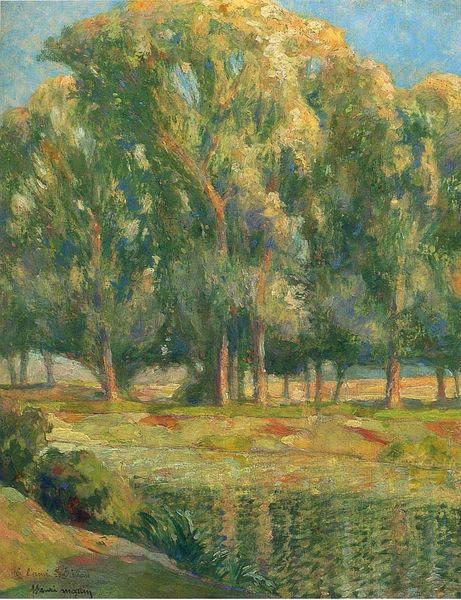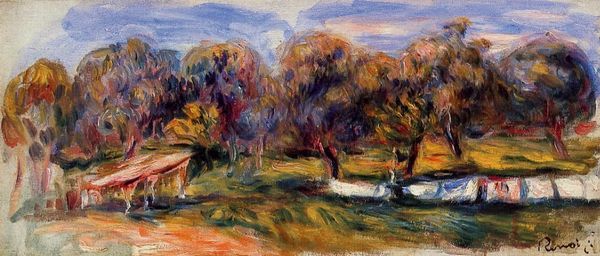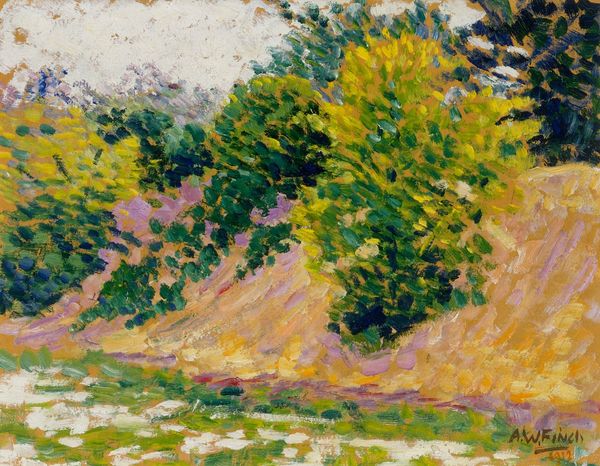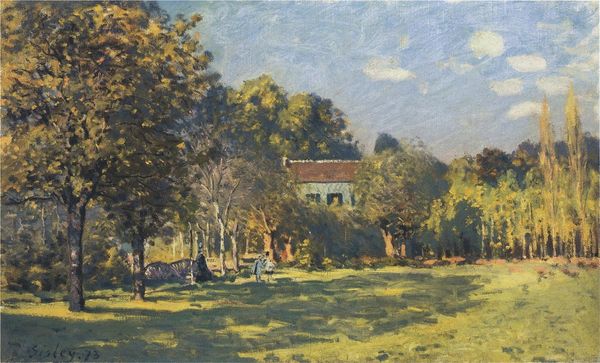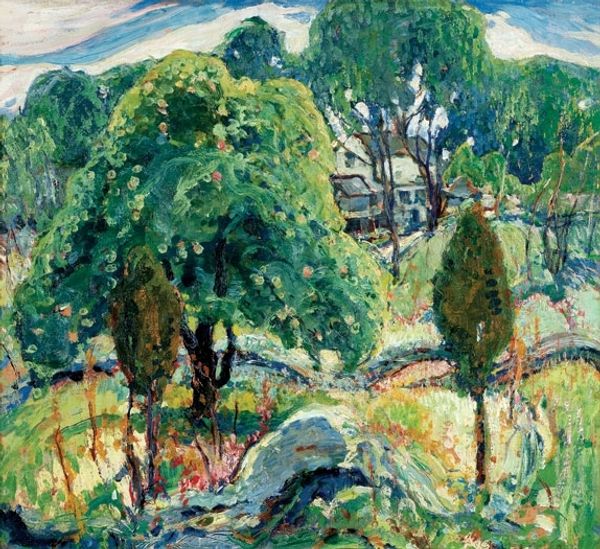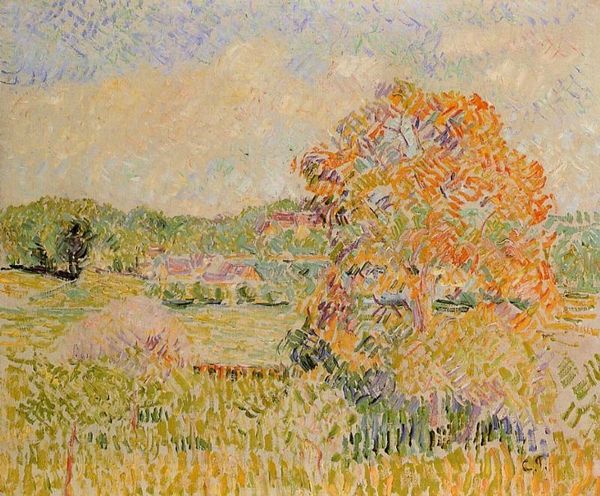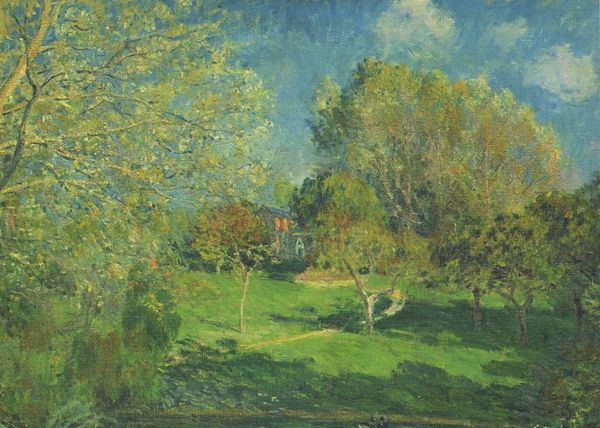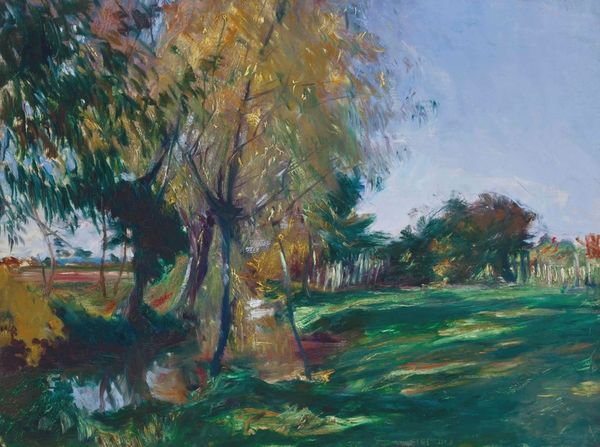
Copyright: Public domain
Paul Cézanne painted "The Trees of Jas de Bouffan" with oil on canvas, capturing a scene from his family’s estate in Provence. Here, Cezanne’s loose brushwork renders the landscape into a tapestry of greens, yellows and blues, challenging academic traditions of idealized landscapes. Made in France, Cézanne’s work reflects a shift in the late 19th century towards modern art, with its emphasis on personal expression and subjective experience. The Jas de Bouffan was not just a place, but a symbol of Cézanne’s identity, a retreat from the rapidly changing urban landscape of Paris. His focus on capturing the essence of the scene, rather than its exact appearance, aligned with broader cultural movements questioning traditional values and embracing individual vision. To understand Cézanne fully, we delve into the art criticism of his time, exhibition records, and letters to fellow artists. This kind of research helps us to see how the meaning of this painting is rooted in the context of his life, artistic development, and the social transformations of his era.
Comments
No comments
Be the first to comment and join the conversation on the ultimate creative platform.
